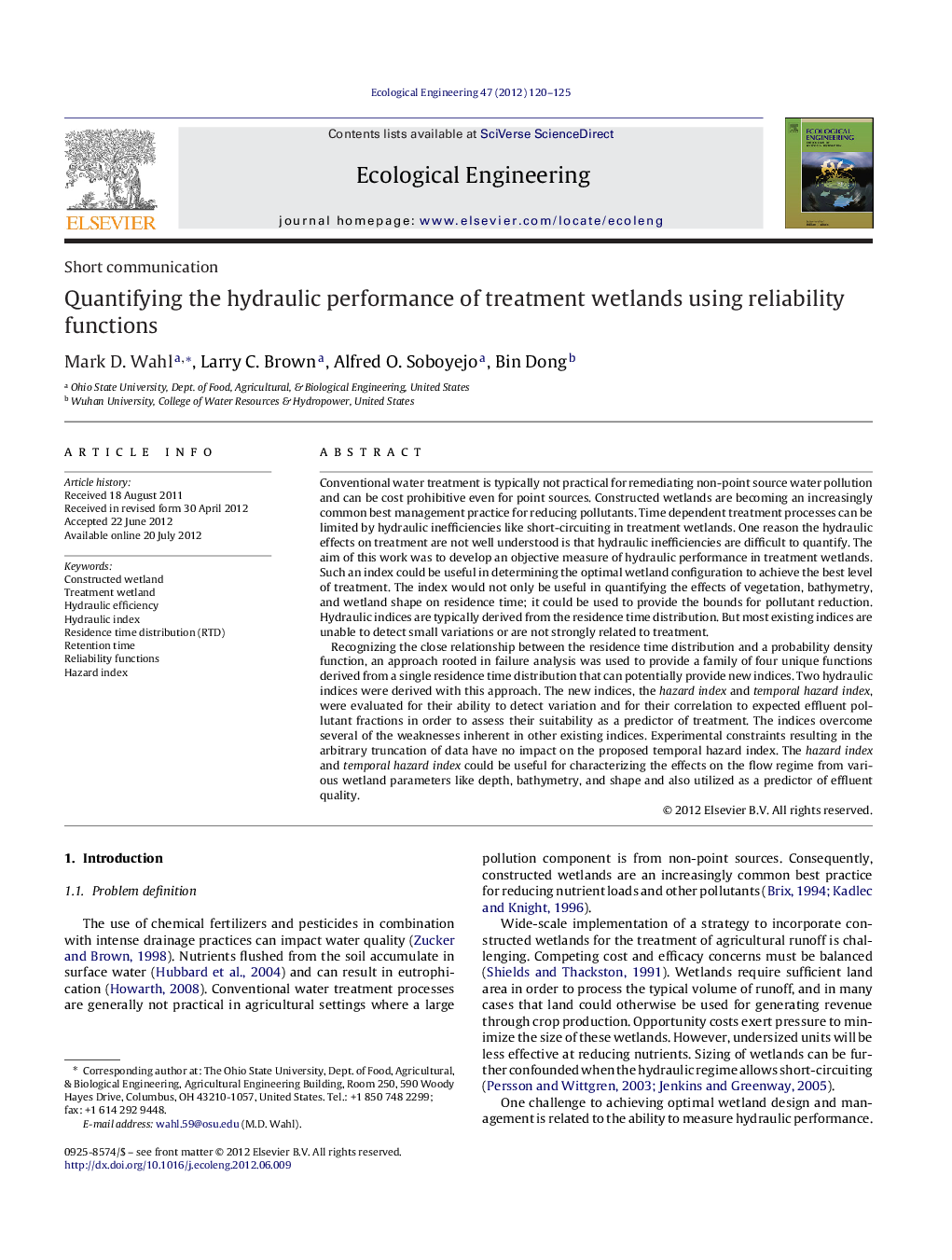| Article ID | Journal | Published Year | Pages | File Type |
|---|---|---|---|---|
| 4390009 | Ecological Engineering | 2012 | 6 Pages |
Conventional water treatment is typically not practical for remediating non-point source water pollution and can be cost prohibitive even for point sources. Constructed wetlands are becoming an increasingly common best management practice for reducing pollutants. Time dependent treatment processes can be limited by hydraulic inefficiencies like short-circuiting in treatment wetlands. One reason the hydraulic effects on treatment are not well understood is that hydraulic inefficiencies are difficult to quantify. The aim of this work was to develop an objective measure of hydraulic performance in treatment wetlands. Such an index could be useful in determining the optimal wetland configuration to achieve the best level of treatment. The index would not only be useful in quantifying the effects of vegetation, bathymetry, and wetland shape on residence time; it could be used to provide the bounds for pollutant reduction. Hydraulic indices are typically derived from the residence time distribution. But most existing indices are unable to detect small variations or are not strongly related to treatment.Recognizing the close relationship between the residence time distribution and a probability density function, an approach rooted in failure analysis was used to provide a family of four unique functions derived from a single residence time distribution that can potentially provide new indices. Two hydraulic indices were derived with this approach. The new indices, the hazard index and temporal hazard index, were evaluated for their ability to detect variation and for their correlation to expected effluent pollutant fractions in order to assess their suitability as a predictor of treatment. The indices overcome several of the weaknesses inherent in other existing indices. Experimental constraints resulting in the arbitrary truncation of data have no impact on the proposed temporal hazard index. The hazard index and temporal hazard index could be useful for characterizing the effects on the flow regime from various wetland parameters like depth, bathymetry, and shape and also utilized as a predictor of effluent quality.
► A metric is needed to relate the flow regime to treatment in constructed wetlands. ► Conventional indices lack sensitivity to variation and correlation to treatment. ► We propose two indices derived from reliability functions. ► The proposed indices demonstrate sensitivity even to slight variations. ► The proposed indices demonstrate correlation to time-dependent treatment processes.
